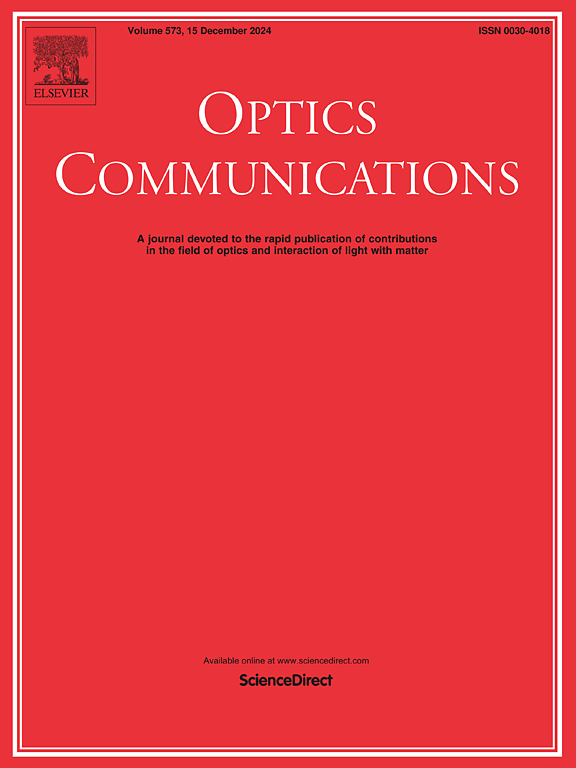基于七芯光纤马赫-泽恩德干涉仪的高灵敏度湿度传感器
IF 2.5
3区 物理与天体物理
Q2 OPTICS
引用次数: 0
摘要
本文提出了一种基于七芯光纤(SCF)的湿度传感马赫-泽恩德干涉仪(MZI),并进行了实验演示。MZI 由夹在两根单模光纤(SMF)之间的一段 SCF 构成,而光纤锥和一根简短的多模光纤(MMF)则充当光纤耦合器,以激发和耦合 SCF 中的多模干涉。分析了不同 SCF 长度的 MZI 的光场分布和耦合效率。理论结果表明,MZI 对 SCF 长度很敏感,有望获得高灵敏度的湿度响应。湿度传感实验表明,在 44-83 %RH 的相对湿度(RH)范围内,灵敏度高达 0.6603 nm/%RH,长期稳定性带来的最大测量不确定性为 0.0006 %RH。人体呼吸测量显示,MZI 的响应时间和恢复时间分别为 0.44 秒和 1.24 秒。此外,还对温度效应进行了实验研究。这种全纤维 MZI 具有配置简单、灵敏度高和稳定性好等优点,因此在湿度测量领域具有很大的潜力。本文章由计算机程序翻译,如有差异,请以英文原文为准。
High-sensitivity humidity sensor based on Mach-Zehnder interferometer in seven-core fiber
A Mach-Zehnder Interferometer (MZI) based on seven-core fiber (SCF) for humidity sensing is proposed and experimentally demonstrated. The MZI is formed by sandwiched a section of SCF in between two single mode fibers (SMFs), while a fiber taper and a brief multimode fiber (MMF) act as fiber couplers to excite and couple the intermodal interference in the SCF. The optical field distribution and coupling efficiency of the MZI with different SCF lengths are analysed. The theoretical results show that the MZI is sensitive to SCF lengths, and it is expected to obtain highly sensitive humidity response. Humidity sensing experiments shows a high sensitivity of 0.6603 nm/%RH over a relative humidity (RH) range of 44–83 %RH, and the maximum measurement uncertainty introduced by the long-term stability is 0.0006 %RH. Human respiration measurement exhibits the response time and recovery time of the MZI are 0.44 s and 1.24 s respectively. The temperature effect is also experimentally investigated. Such an all-fiber MZI presents advantages of simple configuration, high sensitivity and good stability, making it has potential in humidity measurement fields.
求助全文
通过发布文献求助,成功后即可免费获取论文全文。
去求助
来源期刊

Optics Communications
物理-光学
CiteScore
5.10
自引率
8.30%
发文量
681
审稿时长
38 days
期刊介绍:
Optics Communications invites original and timely contributions containing new results in various fields of optics and photonics. The journal considers theoretical and experimental research in areas ranging from the fundamental properties of light to technological applications. Topics covered include classical and quantum optics, optical physics and light-matter interactions, lasers, imaging, guided-wave optics and optical information processing. Manuscripts should offer clear evidence of novelty and significance. Papers concentrating on mathematical and computational issues, with limited connection to optics, are not suitable for publication in the Journal. Similarly, small technical advances, or papers concerned only with engineering applications or issues of materials science fall outside the journal scope.
 求助内容:
求助内容: 应助结果提醒方式:
应助结果提醒方式:


